Oil and gas (O&G) production has been part of Monterey County (County) since the late
1940s, providing a reliable source of oil to California energy markets. In this brief, we
highlight the current economic and fiscal contributions of the industry to the County and
the broader California economy.
Our key findings are:
Monterey County has been the location of substantial oil and gas production since the late 1940s. It is currently the third largest oil-producing county in California, trailing only Kern and Los Angeles. In 2020, 688 active oil and gas production wells were in the County.
These wells produced 7.4 million barrels of crude oil and 179 barrels of oil equivalent (BOE) of natural gas during the year. Oil produced in the County is shipped to California refineries where it is refined for use by in-state consumers for transportation needs and other purposes. The associated natural gas, which is extracted along with oil in some of the wells, is used for powering steam generation facilities and other internal oilfield operations.
About 99 percent of oil produced in Monterey County is from the San Ardo Field, which is located in the southern portion of the County, about 24 miles south of King City.
The field, which is the seventh largest in California (see Figure 1), has a sandstone reservoir that produces heavy crude oil through steam flood operations. The field had 678 active oil and gas producing wells in 2020. The remaining wells are located to the north and south of San Ardo Field in the central portion of the County. Our economic impact estimates include contributions from all wells in Monterey County, with about 99 percent of the totals attributable to San Ardo Field.
Figure 1
Top-Producing Oil Fields in California in 2020
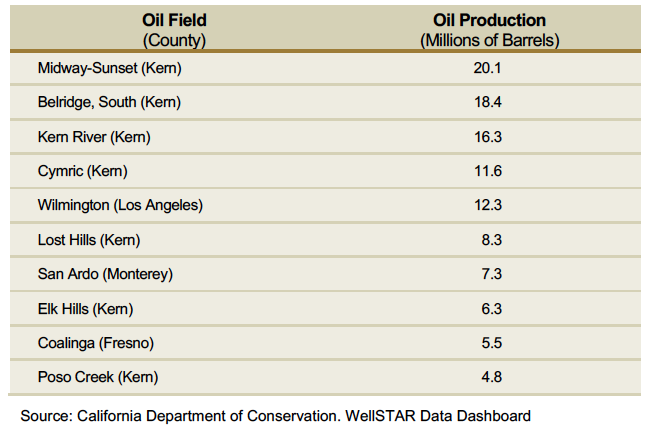
Figure 2 shows oil production from San Ardo field rose from 3.2 million barrels in 2006 to
8.3 million barrels in 2019. The increase during this period was due to large investments made in enhanced oil recovery projects, such as steam injection, which have boosted recovery from the field’s reservoirs and reversed a downward trend in production that had been in place for many years.
However, production fell to 7.4 million barrels in 2020 due to the impact of the Covid-19 recession on investments in new production and a lengthening of the review period for drilling permits by the State of California. Permit approvals for new wells and reworks in Monterey County fell from 127 in 2019 to 56 in 2020, and just 33 during the first nine months of 2021
Reflecting sluggish pace of permitting through the first three quarters of 2021, we estimate that production will fall further to 6.5 million in 2021, 6.2 million barrels in 2022 and 5.9 million in 2023.2 The projection assumes that new well drilling will improve modestly over the next two years, reflecting higher crude oil prices and improving conditions in the O&G production industry. However, permitting will continue to be constrained by state regulatory policies, and as a result, production flowing from newly drilled and completed wells will not be enough to fully offset the natural production decline in San Ardo Field.
Figure 2
Oil Production in San Ardo Field
(Millions of Barrels)
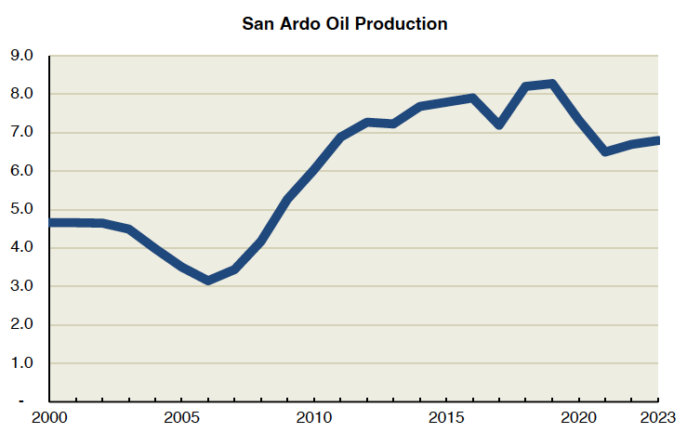
Key economic and fiscal contributions of the oil and gas production industry are summarized in Figure 3.3 It shows that the industry will support 774 jobs during 2021. The total includes 232 O&G employees working in the oilfields and another 542 workers in businesses that supply goods and services to O&G producers, contractors, and households of their employees (these are referred to as multiplier jobs in Figure 3).
The 542 jobs associated with supplying industries include union members working either part- or full-time on construction and construction-maintenance projects, mainly in
San Ardo Field.
Figure 3
Economic Impacts of Oil and Gas Production in Monterey County
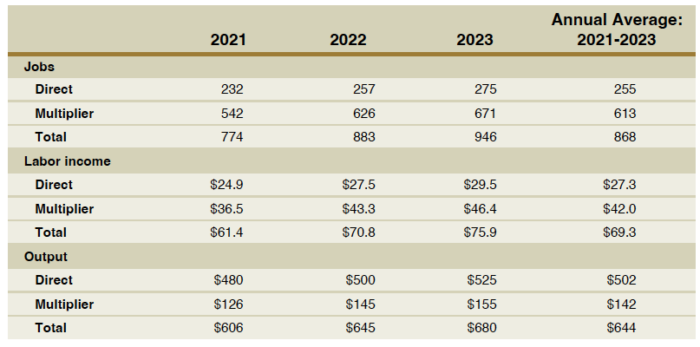
We expect the economic impacts of the industry to increase in 2022 and 2023, as higher oil prices and improved profits lead to more spending on drilling and other investments in oilfield operations. We specifically estimate that O&G production operations will support 883 jobs in 2022 and 946 jobs in 2023.
Solar project impacts.The 2022 and 2023 economic impacts include about 100 construction jobs associated with the installation of a 11-megawatt solar photovoltaic system by Aera. The construction phase of the project is expected to begin in the summer of 2022 and be completed in 2023. Once completed, the system will produce 24 million kilowatt hours of carbon-free electricity annually. The electricity will help power Aera’s oil production operations, with any excess exported to PG&E for use on the state’s
electricity grid.
The oil and gas production industry jobs are high paying, averaging $107,000 per year. As indicated in Figure 3, this is more than double the $51,900 average for all private sector jobs in Monterey County. It is nearly triple the average wage paid in the agricultural sector, and well above the averages in the manufacturing and construction industries, both of which also employ a large number of workers with trades skills and high school diplomas. In addition, many union members work either part- or full-time on construction and construction-maintenance projects in San Ardo Field.
Figure 4
Average Annual Wage by Industry in Monterey: Fourth Quarter 2020
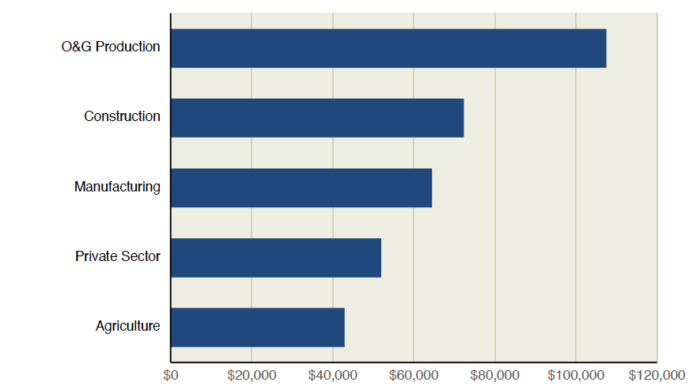
We estimate that the O&G production industry in Monterey County will contribute an annual average of $44 million in state and local taxes, fees, and other charges during the 2021-22 through 2023-24 fiscal years. Of this total, $18 million is state taxes and fees levied on producers and royalty owners. These include income taxes on profits and royalties, sales taxes on purchases of equipment and supplies, California Geologic Energy Management Division (“CalGEM”) assessments that support, in part, the state’s stringent health and environmental standards, and cap and trade allowances.
Figure 5
Taxes, Fees, and Other Charges Paid by the O&G Industry in Monterey County
Annual Average 2021-22 Through 2023-24 Fiscal Years
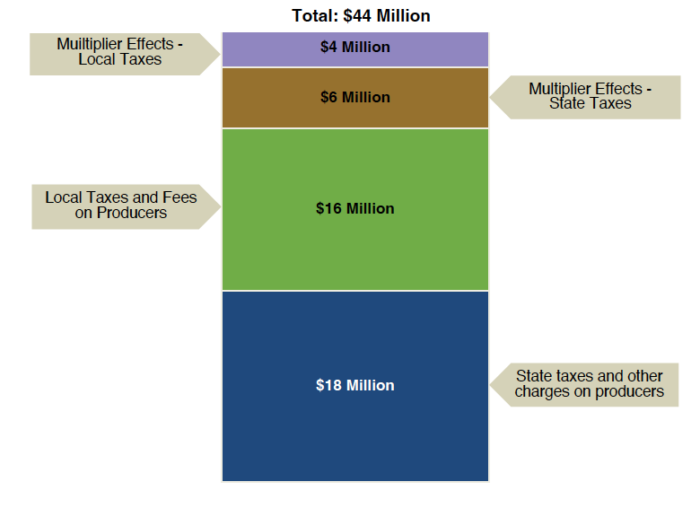
About $16 million is related to local taxes imposed on producers. These include property taxes levied on the value of oil and gas reserves, facilities and equipment, the local share of the sales tax on purchases of inputs by the oil and gas producers, and other taxes and fees.
As one indication of the importance of oil and gas production to local revenues, Chevron and Aera, the two operators in San Ardo Field, are the third and fourth largest property taxpayers in Monterey County, accounting for over $8 million in taxes in 2020-21 (see Figure 5). We expect these contributions will increase as crude oil prices rise. Property taxes represent the County’s largest source of general revenues, and are used to support schools, public safety, health, social assistance, and other services.
Figure 6
Top Property Taxpayers in Monterey County: 2020-21
(Dollars in Millions)
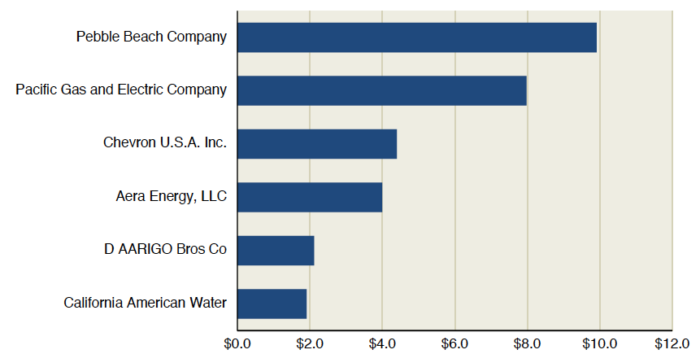
In addition to taxes levied directly on producers, state and local governments receive revenues related to taxes on employee wages and the spending of those wages on housing and taxable goods in the County. These expenditures will boost tax revenues in the County. We estimate that these additional revenues, which are referred to as multiplier effects in Figure 5, will total about $6 million in state taxes and $4 million in local tax payments.
Importance of O&G revenues to Monterey County. Local taxes directly and indirectly supported by O&G production will average about $20 million annually during the 2021- 22 through 2023-24 period. Of this total about $10 million will go to K-12 and community colleges, providing support to students in San Ardo School District, the South Monterey County Joint Union High School District and the Hartnell College. The majority of the remaining $10 million will support County related programs including the Sheriff/Coroner, Social Services, Health, and Housing and Community Development.
Local revenues supported by O&G production will be especially important in the next several years because of the multiple pressures facing the Monterey County budget. The County was able to avoid over $40 million in service reductions in 2021-22, despite the Covid-19 recession, by using one-time federal pandemic relief funds (provided through the Coronavirus Aid, Relief, and Economic Security Act and the American Rescue Plan Act), and the redirection of cannabis revenues from cannabis regulatory programs to the general fund.4
While these actions enabled the county to avoid deep cuts in the current year, budget pressures will likely reemerge in 2022-23 and beyond as one-time federal funds are exhausted and costs for employee wages, pensions, health insurance, and workers compensation rise.
Regarding wage costs, the County is currently in negotiations with ten different employee
bargaining groups regarding wages and benefits. Although these agreements are likely to
result in added County costs, the 2021-22 budget total does not recognize cost increases
for any labor agreement that has not been finalized. The County estimates that each 1
percent increase in wages will translate into $3.5 million in annual general fund
expenditures.5 Added spending due to labor contracts will come from reserves, leaving the
County in a more vulnerable position as it begins the 2022-23 budget process.
Regarding pensions, the County estimates that required employer contributions to
CalPERs will rise from $68 million in 2021-22 to $78 million by 2024-25 a $10 million
increase over three years.
Regarding wage costs, the County is currently in negotiations with ten different employee bargaining groups regarding wages and benefits. Although these agreements are likely to result in added County costs, the 2021-22 budget total does not recognize cost increases for any labor agreement that has not been finalized. The County estimates that each 1 percent increase in wages will translate into $3.5 million in annual general fund expenditures.5 Added spending due to labor contracts will come from reserves, leaving the County in a more vulnerable position as it begins the 2022-23 budget process.
Other community contributions. In addition to state and local tax payments, the O&G industry has also provided millions of dollars in support for non-profit organizations in Monterey that are focused on education (including science and STEM afterschool programs), economic and workforce development, youth development, and civic and community engagement.
The single largest industry in Monterey County is agriculture, which employs about 54,000 workers. Annual production of crops and livestock was about $4 billion in 2020, making Monterey the fourth largest agricultural producer in the state. The county is a leading producer of lettuce, broccoli, celery, cauliflower, strawberries, and artichokes.
One of the major challenges facing agriculture in Monterey County is water for irrigation. Because the Salinas Valley receives only modest amounts of annual rainfall, and the region is not linked to the federal or state water projects, virtually all its water comes from groundwater in the Salinas River groundwaterbasin. Despite years of conservation efforts by farmers and investments in irrigation efficiency, the Salinas River basin is one of the most over-drafted in the state.
Against this backdrop, one of the major byproducts of oil and gas extraction is “produced water,” which is brackish, non-potable water that occurs naturally in the reservoir (well below groundwater basins) and is produced along with the oil. In 2020, about 20 barrels of produced water was extracted in San Ardo Field for each barrel of oil produced.
A portion of the produced water is filtered, treated, and then turned to steam, enabling operators to avoid use of fresh water for these purposes. Much of the remaining water is treated further for beneficial reuse in the County. Specifically, Chevron constructed a reverse osmosis facility in 2006 that cleans and purifies the produced water. The purified water is then released through shallow wetlands into aquifer recharge basins that replenish the Salinas River basin. In 2018, about 1,866-acre feet of water was released into recharge basins through this process. Area Energy is 100 percent self-sufficient in water use, with 96 percent of produced water recycled for use in enhanced oil recovery operations.
Aside from the economic activity associated with annual production, the oil and gas reserves themselves represent a major source of wealth to the Monterey County region. The value of producing reserves can be measured by estimating the present value of after- tax cash flows (i.e. annual revenues minus operational and investment costs) generated from all future extraction of oil from these reserves. We estimate the total economic value of producing oil reserves in Monterey County is approximately $1.2 billion. This estimate is based on the following assumptions: (1) discount rate of 13.5 percent; (2) a 20-year production period, with annual declines averaging 3 percent per year; (3) constant-dollar before-tax cash flows averaging $42 per barrel of production; and (4) a combined federal and state effective income tax rate of 30 percent.
This estimate includes only the value of producing reserves. It does not include values of undeveloped mineral acres held by individuals and businesses in the County.
Any state or local ban on production would result in a major loss in wealth to mineral rights owners and producers, which would have negative effects on economic activity in the County.8 Such production bans could also result in a liability to state or local governments imposing the bans if the affected entities were to prevail in “takings” lawsuits.
The oil and gas production industry makes substantial economic contributions to Monterey County. The industry directly supports hundreds of high-paying jobs for workers with high-school or technical degrees, and it indirectly supports hundreds of additional jobs in other sectors, including construction. The industry also directly and indirectly contributes $20 million of tax revenues to local governments per year, and it provides a reliable flow of crude oil to California refiners and, ultimately, to California consumers of petroleum products. Production from the County reduces California’s dependence on oil from remote foreign regions and provides a crucial measure of energy security to people and businesses in this state.

Over 200,000 Californians standing together to support safe, affordable and reliable local oil and gas production.